The Edges of the Earth (1)
Edges of the earth: the parts of the world where, according to the myths of the ancient Greeks and Romans, fabulous creatures and savage barbarians lived. These legendary beliefs influenced geography and can still obstruct our understanding of ancient ethnography.
Introduction
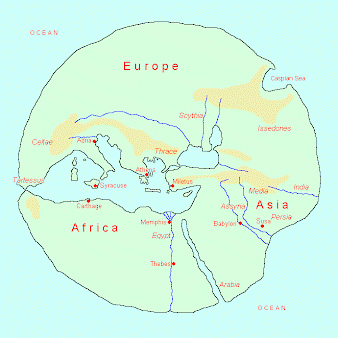
When you ask a child to make a map of the world, he will first draw his own house in the middle of the sheet, surrounded by his neighborhood, and his hometown. The city where his grandparents live will almost certainly be somewhere near the edge of the drawing. It is natural to think of your own street as the center of the world.
The ancients did the same. Without exception, they believed that their own country was the center of a disk-like world, and this belief continued to influence ancient though, even after the Greeks had discovered that the world is a sphere.
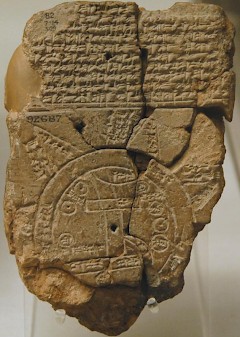
A Mesopotamian world map shows a circular earth, surrounded by an Ocean with islands full of wonders. Babylon was thought of as the center of the universe, its ziggurat, the famous Etemenanki, being the "foundation of heaven on earth". (It is still known as the "tower of Babel" of Genesis 11.) The Egyptians, Phoenicians, Hittites, and Jews all had comparable ideas about the shape of the world: they all lived in the center of the earth, and they all believed that the edges of the world's disk were inhabited by strange animals. For example, the author of the Epic of Gilgameš situated the monster Humbaba in the far west, and the author of the biblical book Jonah believed that the prophet fled to the far west, where he was devoured by a giant sea creature.
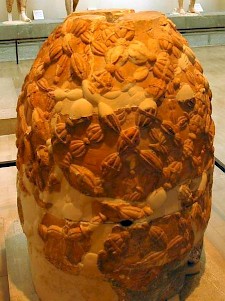
The Greeks shared this belief. The demigod Heracles went to the edges of the earth to meet the legendary Amazons, the Hesperides and the monster Geryon. Of course, Greece was the center of the world, and the Greeks believed that they could prove it. Once, in the mythological past, the supreme god Zeus had released two eagles at the edges of the earth, and they had met each other at Delphi. A monument was erected to celebrate the outcome of this mytho-scientific experiment: it was called the omphalos ('navel'). Probably, the story was invented to give significance to a very ancient monument, the meaning of which was no longer understood. In fact, it is likely that the Delphian omphalos originally was a baetyl, a "house of god" that is well-known from the ancient Near East. (The black stone of Mecca is the most famous example, but the Phrygian mother goddess Cybele and the sun god Elagabal of Emesa were venerated in a similar fashion.)
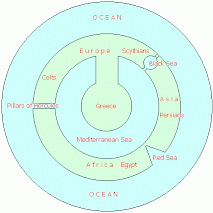
The Greeks developed another idea: the distinction between civilized people and barbarians. Originally, barbaros simply meant 'babbler' and was used to indicate everybody who did not speak Greek. After the Greek victory in the Persian wars (492-479), the word became pejorative: a barbarian was not only unable to speak Greek, but was inferior as well. At that moment, the two ideas had already been combined: the center of the world was inhabited by civilized Greeks, the periphery by barbarians.
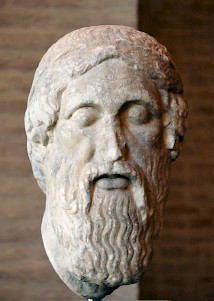
Until the late sixth century BCE, the Greeks conceptualized the world as a series of concentric circles. Greece was surrounded by the Mediterranean Sea (with large islands like Sicily, Italy, and Cyprus); the Mediterranean was surrounded by the three continents, and behind the continents was the Ocean, which surrounded the world disk. Here, one could encounter strange monsters: Homer's Odyssey mentions a great variety of them. The edges of the continents were inhabited by savage, monstrous barbarians, the opposites of the civilized Greeks in the middle of the earth.
Of course the Greeks knew that this was too schematic, and after c.500 BCE, they started to understand better what the world looked like. Especially after Alexander's conquest of the Achaemenid empire (334-323) and the voyage of Pytheas of Massilia (c.325), the world maps of the Greeks became a lot more reliable. Nevertheless, notions about the barbarians on the edges of the earth were always present when the Greeks (and later: the Romans) described the world.